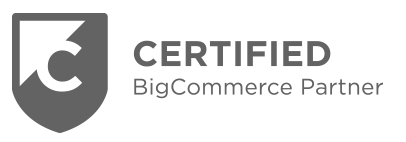Ecommerce Equation: Strategies for Ecommerce Success
Imagine owning an online store that consistently attracts and converts customers, generating steady revenue day in and day out. Sounds like a dream, right? Well, it’s time to turn that dream into reality by cracking the ecommerce equation. In this article, we will uncover the strategies that successful online businesses employ to achieve sustained growth and profitability. From optimising your website for search engines to crafting captivating product descriptions, we will explore the essential elements of a winning ecommerce equation strategy. Discover how to effectively utilise social media platforms, harness the power of email marketing, and leverage data-driven insights to make informed business decisions.
Whether you’re just starting out or looking to take your online store to the next level, this article provides actionable tips and expert advice to help you maximise your online sales and outshine your competitors. It’s time to unlock the secrets of ecommerce equation success and catapult your business to new heights. Don’t miss out on the opportunity to transform your ecommerce business.
Let’s embark on this journey together and explore the strategies that will pave the way to your online success. Keywords: ecommerce equation, strategies, success, online store, revenue, growth, profitability, search engine optimisation, social media, email marketing, data-driven insights, online sales, competitors.
Ecommerce Equation: Why it is Important for Businesses
The ecommerce equation offers a multitude of benefits for businesses, including:
- Increased Market Reach: With an online store, you can transcend geographical limitations and reach a wider customer base than ever before.
- 24/7 Availability: Your online store is always open, allowing customers to browse and purchase products at their convenience.
- Reduced Overhead Costs: Compared to brick-and-mortar stores, ecommerce eliminates the need for physical storefronts, leading to lower operational costs.
- Enhanced Data Collection and Customer Insights to the ecommerce equation: Online platforms provide valuable data on customer behavior and preferences, enabling data-driven decisions and marketing strategies.
- Improved Scalability: Ecommerce businesses can use the ecommerce equation to easily scale their operations by adding new products and features without significant physical infrastructure changes.
Key Statistics on Ecommerce Growth and Trends (the Ecommerce Equation)
The growth of ecommerce is undeniable. Here are some eye-opening statistics to showcase its current and future potential to help with your ecommerce equation:
- Global retail ecommerce sales are projected to reach $6.5 trillion by 2023 (Statista).
- In 2022, ecommerce sales accounted for over 14.3% of global retail sales (eMarketer).
- Mobile commerce (mCommerce) is on the rise, with over 73% of online sales expected to be made through smartphones by 2025 (Statista).
- Social media plays a significant role in ecommerce, with over 54% of consumers researching products on social media platforms before making a purchase (Sprout Social).
These statistics highlight the immense potential of ecommerce and the evolving landscape driven by mobile technology and social media integration.
Building a Successful Ecommerce Website using the Ecommerce Equation
Creating a successful ecommerce website requires careful planning and execution. Here are some key ecommerce equation elements to consider:
- User-Friendly Design: Your website should be intuitive and easy to navigate, allowing customers to find products, access information, and complete purchases seamlessly.
- High-Quality Product Images and Descriptions: Compelling visuals and detailed descriptions showcase your products in their best light and provide crucial information to potential buyers.
- Secure Payment Gateway: Secure transactions are essential for building customer trust. Integrate a secure payment gateway to ensure a safe and reliable checkout process.
- Multiple Payment Options: Offer a variety of payment options, including credit cards, debit cards, and popular online wallets, to cater to different customer preferences.
- Seamless Checkout Process: Streamline the checkout process by minimising steps and offering guest checkout options for faster transactions.
Optimising Your Ecommerce Website for Search Engines to help with the Ecommerce Equation
Search Engine Optimisation (SEO) is crucial for increasing your online store’s visibility in search engine results pages (SERPs). Here are some SEO best practices for the ecommerce equation:
- Keyword Research: Identify relevant keywords that your target audience uses to search for products like yours.
- On-Page Optimisation: Optimise your product pages with targeted keywords in titles, descriptions, and meta tags.
- High-Quality Content Creation: Create informative and engaging content related to your products to attract organic traffic and establish expertise.
- Mobile Responsiveness: Ensure your website is optimised for mobile devices to cater to the growing mCommerce market.
Ecommerce Equation Marketing Strategies
Marketing your online store effectively is critical to reach your target audience and drive sales. Here are some key ecommerce equation marketing strategies to consider:
- Pay-Per-Click (PPC) Advertising: Utilise platforms like Google Ads and social media advertising to target specific demographics and product searches.
- Content Marketing: Publish valuable blog posts, articles, and infographics that educate potential customers and establish your brand as a thought leader.
- Email Marketing: Build an email list and send engaging newsletters with promotions, product updates, and personalised recommendations.
- Affiliate Marketing: Partner with other relevant websites or influencers to promote your products and reach new audiences.
Leveraging Social Media for Ecommerce Equation Success
Social media plays a vital role in ecommerce marketing. Here are some tactics to leverage social media for your online store:
- Showcase Products: Utilise high-quality visuals to showcase your products and create engaging posts that highlight their features and benefits.
- Run Contests and Giveaways: Generate excitement about your brand and products by running contests and giveaways on social media platforms.
- Social Listening and Engagement: Use social media listening tools to monitor conversations about your brand and industry, and actively engage with your audience.
If you would like help with your website, please contact us. We will be happy to help!
Boosting your average order value (AOV) is a fantastic way to increase your online revenue without necessarily attracting more customers. Here are some effective strategies to consider:
- Offer Product Bundles and Upsells: Create enticing product bundles that combine popular items or offer complementary products at a discounted price when purchased together. This encourages customers to spend more per purchase.
- Introduce Free Shipping Thresholds: Implement a free shipping threshold that incentivises customers to add more items to their cart to qualify for free delivery.
- Strategic Product Placement: Use strategic product placement techniques like showcasing related items alongside a product page or highlighting higher-priced versions as “premium” options.
- Highlight Add-On Products: Promote relevant add-on products that complement the customer’s primary purchase. Limited-Time Promotions: Offer limited-time discounts on higher-value items or bundles to create a sense of urgency and encourage customers to buy more.
- Optimise Your Checkout Process: Streamline the checkout process to ensure it’s user-friendly and reduces cart abandonment.
- Upselling and Cross-Selling: Offer additional products or services related to the customer’s purchase.
- Bundling Products: Create product bundles to encourage larger purchases.
- Free Shipping Offers: Offer free shipping for orders above a certain amount.
- Loyalty Programs: Reward loyal customers with discounts and exclusive offers.
By understanding and applying the ecommerce equation, you can optimise your online store and drive sales.
How Can You Improve Your E-commerce Conversion Rate in Adelaide?
Struggling to convert website visitors into paying customers in your Adelaide e-commerce store? Here are some actionable strategies you can implement to boost your conversion rate and drive more sales:
1. Enhance User Experience:
- Optimise website navigation: Ensure your website is easy to navigate and find products quickly.
- Create high-quality product pages: Include clear and informative product descriptions, professional product images, and customer reviews.
- Offer a seamless checkout process: Minimise steps in the checkout process and offer a variety of payment options popular in Australia.
- Optimise for mobile devices: A significant portion of online shopping happens on smartphones. Ensure your website is mobile-friendly for a smooth user experience.
2. Build Trust and Confidence:
- Display prominent trust signals: Include customer testimonials, reviews, and security badges to build trust with potential customers.
- Offer clear return and shipping policies: Address customer concerns by having transparent return and shipping policies readily available.
- Provide excellent customer service: Be responsive to customer inquiries and offer prompt support to build trust and encourage repeat business.
3. Leverage Marketing Strategies:
- Run targeted advertising campaigns: Reach your ideal customer base in Adelaide with targeted social media ads or search engine marketing (SEM) campaigns.
- Run A/B testing: Test different versions of your website elements like product pages, calls to action, and checkout processes to identify what converts best for your audience.
- Implement retargeting campaigns: Retarget website visitors who have abandoned their carts with enticing offers or remind them about products they viewed.
Here at Adelaide Website Design, we are a team of experienced e-commerce professionals who specialise in conversion rate optimisation (CRO). Please contact us to find out more.

To increase traffic to your ecommerce website, consider these strategies:
- Search Engine Optimisation (SEO): Optimise your website’s content and structure to rank higher in search engine results.
- Pay-Per-Click (PPC) Advertising: Use platforms like Google Ads to target specific keywords and demographics.
- Social Media Marketing: Leverage social media platforms to engage with your audience and promote your products.
- Content Marketing: Create valuable content like blog posts and articles to attract organic traffic.
- Email Marketing: Build an email list and send targeted marketing campaigns.
How Can I Increase Traffic to My E-commerce Website in Adelaide?
Attracting more visitors to your Adelaide e-commerce website is crucial for driving sales and achieving online success. Here are some actionable strategies you can implement:
Search Engine Optimisation (SEO):
- Optimise Your Website Content: Integrate relevant keywords and target Adelaide-specific search terms throughout your product descriptions, page titles, and meta descriptions.
- Build High-Quality Backlinks: Encourage other websites, especially Adelaide-based businesses or relevant publications, to link back to your online store.
- Claim and Optimise Your Google My Business Listing: Ensure your e-commerce business is listed on Google My Business and optimised with accurate information and relevant keywords to improve local search visibility.
Content Marketing:
- Create Engaging Blog Content: Publish informative and engaging blog posts that cater to your target audience’s interests. Focus on topics related to your products and incorporate Adelaide-centric themes where applicable.
- Utilise Social Media Marketing: Promote your e-commerce website and products on social media platforms popular in Adelaide. Engage with your audience, run targeted ads, and participate in relevant online communities.
Paid Advertising:
- Consider Pay-Per-Click (PPC) Advertising: Run targeted PPC campaigns on search engines or social media platforms to reach potential customers in Adelaide who are actively searching for products like yours.
Additional Tips for Adelaide Businesses:
- Offer Promotions and Discounts: Run targeted promotions or discounts to attract new customers in Adelaide and incentivise repeat business.
- Partner with Local Businesses: Collaborate with complementary businesses in Adelaide for cross-promotion opportunities, expanding your reach to new audiences.
- Prioritise User Experience (UX): Ensure your website is user-friendly, mobile-responsive, and fast-loading to keep Adelaide visitors engaged and encourage them to explore your online store.
Here at Adelaide Website Design, we offer a comprehensive range of SEO and e-commerce marketing services to help Adelaide businesses increase website traffic and drive sales. We can create a customised strategy that targets local audiences and helps you achieve your online business goals.
Contact Adelaide Website Design today for a free consultation to discuss your e-commerce website traffic and explore how our Adelaide-based team can help you develop a winning digital marketing strategy.
The ecommerce equation is a simplified framework to understand the core elements of successful online selling. It can be expressed as:
Revenue = Traffic x Conversion Rate x Average Order Value
This equation highlights the importance of driving traffic to your website, converting visitors into customers, and maximising the average amount spent per purchase.

What is the E-commerce Equation for Success in Adelaide?
The success of your e-commerce business in Adelaide depends on a carefully balanced equation. Here are the key factors that contribute to a thriving online store:
1. User-Friendly Website:
- A well-designed and user-friendly website is essential for attracting and retaining customers.
- Your website should be easy to navigate, visually appealing, and optimised for mobile devices.
2. Compelling Product Offerings:
- Offer high-quality products that cater to the needs of your target audience in Adelaide.
- Ensure product descriptions are informative, engaging, and optimised for search engines.
3. Effective Marketing Strategy:
- Implement a strategic marketing plan to reach your target audience and drive traffic to your online store. This could involve search engine optimisation (SEO), social media marketing, email marketing, or paid advertising.
- Consider local marketing strategies to reach customers specifically in Adelaide.
4. Streamlined Checkout Process:
- Make the checkout process as simple and secure as possible to minimise cart abandonment.
- Offer a variety of payment options popular in Australia, and ensure a smooth checkout experience on all devices.
5. Excellent Customer Service:
- Provide exceptional customer service to build trust and encourage repeat business.
- Offer responsive customer support options and address customer inquiries promptly.
Here at Adelaide Website Design, we are a team of experienced e-commerce professionals who can help you optimise each element of the e-commerce equation.
- We can design and develop a user-friendly e-commerce website tailored to your Adelaide business needs.
- We can assist with developing an effective marketing strategy to reach your target audience.
- We can optimise your website for search engines to improve organic traffic.
Contact Adelaide Website Design today for a free consultation to discuss your e-commerce business goals and explore how we can help you achieve success in Adelaide.
Unlocking the Secrets of Ecommerce Website Design
Ecommerce website design is more than just aesthetics; it’s about creating a seamless, user-friendly shopping experience. Adelaide Website Design explains the key elements of successful e-commerce design, from product listings to secure payment gateways. Learn how to create an online store that drives sales and grows your business.
What is Ecommerce Website Design and Why is it Important?
Your ecommerce website is often the first point of contact between your business and potential customers. A well-designed website can:
- Make a strong first impression: A visually appealing and professional website builds trust and credibility.
- Enhance user experience: Easy navigation, clear product information, and a streamlined checkout process encourage visitors to make a purchase.
- Improve search engine rankings: A website optimised for search engines is more likely to be found by potential customers.
- Increase conversions: A well-designed website guides visitors through the sales funnel, leading to higher conversion rates.
- Build brand loyalty: A positive online shopping experience encourages customers to return and make repeat purchases.
What is ecommerce Website Design? Key Elements of Effective Ecommerce Web Design
Several key elements contribute to effective ecommerce web design. These include:
1. Website User Experience (UX)
UX focuses on creating a seamless and enjoyable experience for website visitors. Key aspects of UX in ecommerce web design include:
- Intuitive Navigation: Clear menus, search functionality, and logical site structure help users find what they’re looking for quickly and easily. Use clear categories and labels. Conduct user tests to fine-tune your site’s navigation.
- Easy-to-Find Product Information: Detailed product descriptions, high-quality images, and customer reviews provide shoppers with the information they need to make informed purchasing decisions. Show items from multiple angles and in use. Add zoom features so customers can see details up close.
- Streamlined Checkout Process: A simple and secure checkout process minimises cart abandonment. Offer guest checkout options, multiple payment methods, and clear shipping information.
- Mobile Optimisation: With a significant portion of online shopping occurring on mobile devices, ensuring your website is mobile-friendly is crucial.
2. Website Visual Design
The visual design of your ecommerce website plays a crucial role in attracting and engaging visitors. Key considerations include:
- Brand Identity: Your website should reflect your brand’s personality, values, and aesthetic. Use colors, fonts, and imagery that are consistent with your brand guidelines.
- Clean and Uncluttered Layout: A minimalist design helps shoppers focus on products without distractions. Use white space to separate elements and make the page easier to scan.
- High-Quality Images and Videos: Use professional-quality visuals to showcase your products in the best possible light. Images can improve a website’s conversion rate significantly.
- Compelling Calls to Action (CTAs): Use clear and concise CTAs to guide visitors through the purchasing process.
3. Mobile Optimisation
A responsive layout is key for ecommerce websites. It makes your site look good on all devices. This means customers can shop easily on phones, tablets, and computers. You need to use flexible grids and images. These adjust to fit different screen sizes. Key elements of mobile optimisation include:
- Responsive Design: Ensure your website adapts seamlessly to different screen sizes and devices.
- Fast Loading Times: Optimise images and code for speed, as mobile users expect quick loading times.
- Touch-Friendly Navigation: Use large buttons and input fields for easy tapping on mobile devices.
- Simplified Navigation: Limit the number of menu items to prevent overcrowding and make it easier for shoppers to find what they’re looking for on smaller screens. Use clear and concise labels for navigation items.
4. Search Engine Optimisation (SEO)
SEO helps your ecommerce website rank higher in search engine results, making it easier for potential customers to find you. Key SEO considerations include:
- Keyword Research: Identify relevant keywords that your target audience is using to search for products like yours.
- On-Page Optimisation: Optimise your website’s content, including product descriptions, titles, and meta descriptions, with relevant keywords.
- Mobile-Friendliness: Google prioritises mobile-friendly websites in search results.
- Site Speed: A fast-loading website improves user experience and SEO rankings.
- Link Building: Acquire high-quality backlinks from other websites to improve your website’s authority.
5. What is Rcommerce Website Design Trust and Security
Building trust with your customers is essential for ecommerce success. Key elements of trust and security include:
- Secure Payment Gateway: Use a reputable payment gateway to ensure secure transactions.
- SSL Certificate: An SSL certificate encrypts data transmitted between the user’s browser and your website, protecting sensitive information.
- Privacy Policy: Clearly display your privacy policy to inform customers about how you collect and use their data.
- Customer Reviews and Testimonials: Positive reviews and testimonials build trust and social proof.
- Contact Information: Make it easy for customers to contact you with questions or concerns.
Ecommerce Web Design Best Practices:
- Keep it Simple: Avoid clutter and distractions. A clean and minimalist design helps users focus on your products.
- Express Your Brand: Ensure your website reflects your brand’s personality and values.
- Use High-Quality Images: Invest in professional product photography.
- Make Navigation Easy: Design an intuitive and user-friendly navigation system.
- Optimise for Mobile: Ensure your website is fully responsive and provides a seamless mobile experience.
- Prioritise Site Speed: Optimise your website for fast loading times.
- Build Trust: Incorporate trust signals, such as secure payment options, customer reviews, and a clear privacy policy.
- Focus on the Checkout Process: Make the checkout process simple, straightforward, and secure.
- Leverage Social Proof: Display customer reviews, testimonials, and social media feeds.
- Measure Performance and Gather Feedback: Use analytics tools to track website performance and gather feedback from users to identify areas for improvement.
Ecommerce Web Design Platforms
Choosing the right ecommerce platform is crucial for building a successful online store. Popular platforms include:
- Shopify: A user-friendly platform with a wide range of features and apps.
- BigCommerce: A robust platform suitable for businesses of all sizes, with a focus on scalability and advanced features.
- WooCommerce: A flexible and customisable platform built on WordPress.
Conclusion
Effective ecommerce web design is a critical component of online business success. By focusing on user experience, visual design, mobile optimisation, SEO, and trust, you can create an online store that attracts customers, drives sales, and builds a strong brand. Remember to continuously measure your website’s performance and gather feedback from users to identify areas for improvement and ensure you’re providing the best possible online shopping experience.
If you would like help with your ecommerce web design please contact us. We will be happy to help!




